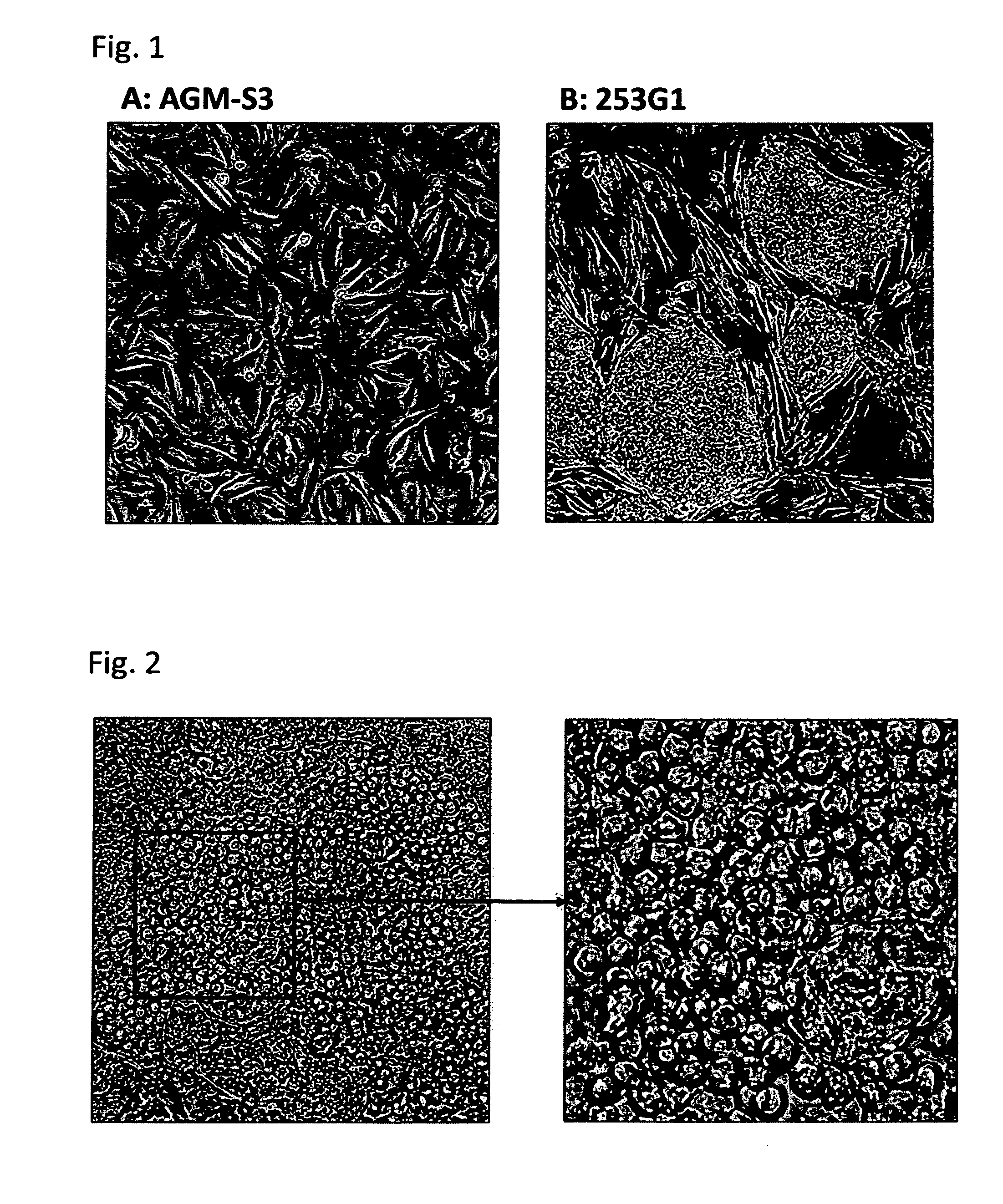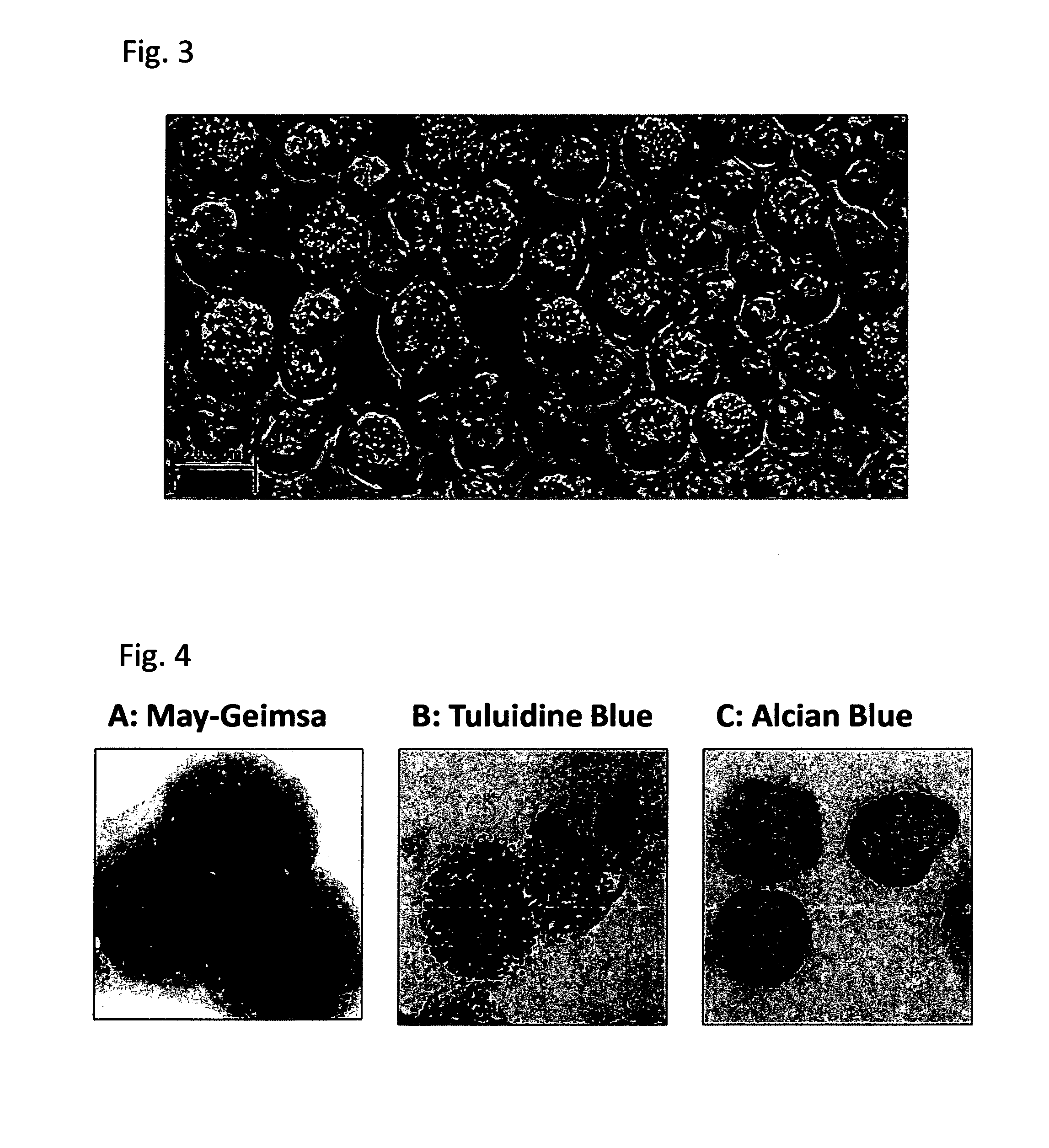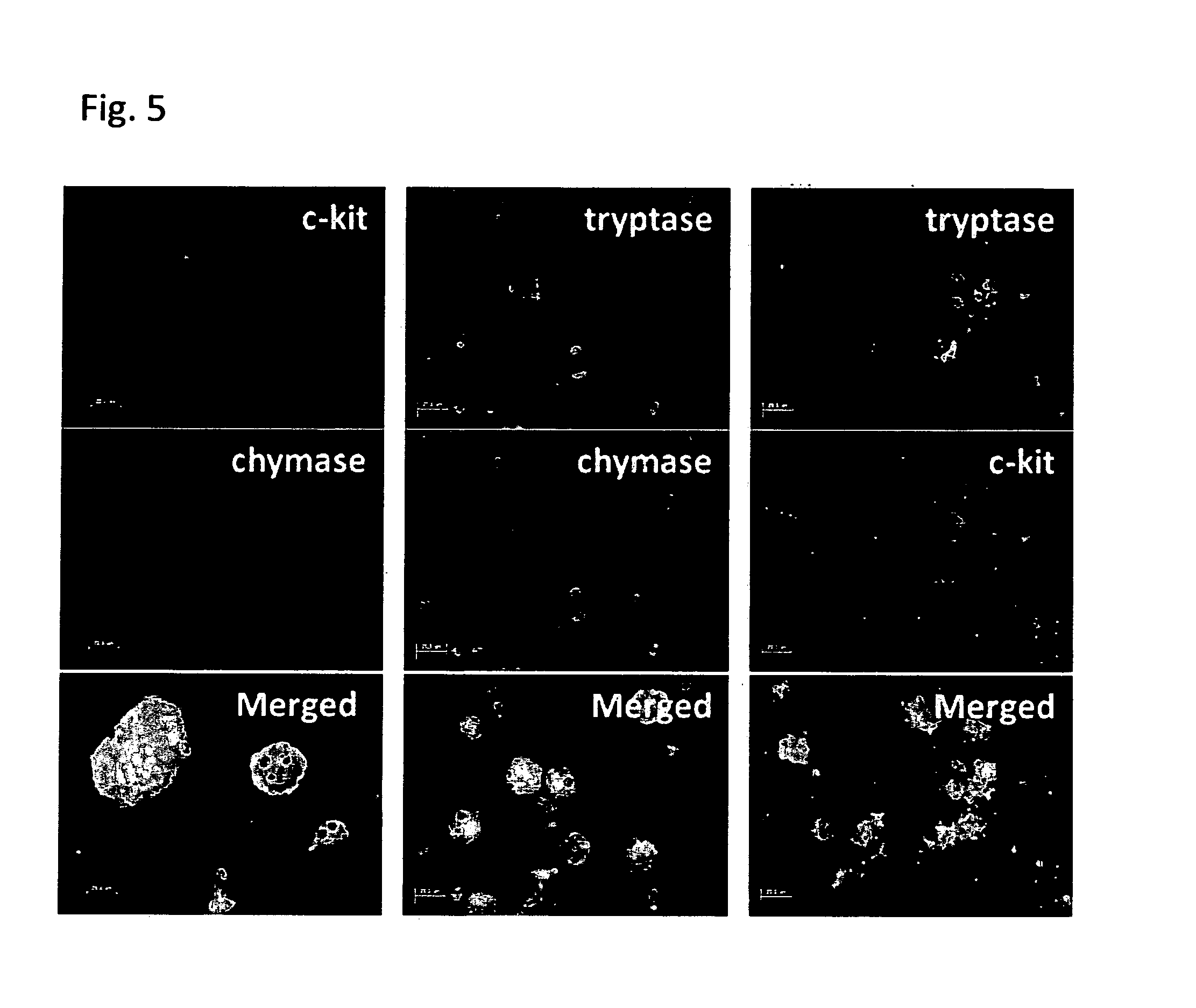Method for producing mast cells from pluripotent stem cells
a technology of pluripotent stem cells and mast cells, which is applied in the field of producing human mast cells from pluripotent stem cells, can solve the problems of social problems, no report of successful differentiation of human ips cells into human mast cells, etc., and achieve the effect of efficient production of mast cells
- Summary
- Abstract
- Description
- Claims
- Application Information
AI Technical Summary
Benefits of technology
Problems solved by technology
Method used
Image
Examples
example 1
Cells
[0158]AGM-S3 cells established and cultured by the conventional method described below (JP 2001-37471 A). Briefly, the AGM-S3 cells were established by a process where the AGM region was excised from a mouse fetus and subjected to γ-ray irradiation to remove hematopoietic cells, followed by cloning by the limiting dilution method. These AGM-S3 cells are known to have an activity to support the growth of human haematopoietic stem cells. A photograph showing the AGM-S3 cells is shown in FIG. 1A. On the other hand, iPS cells (253G1) were provided from Dr. Yamanaka and cultured by the conventional method described below (Nakagawa M, et al., Nat Biotechnol 26 (1), 101, 2008). Briefly, the 253G1 cells were established by introducing Oct3 / 4, Sox2 and Klf4 to fibroblasts derived from human dermis. The 253G1 cells can also be obtained from RIKEN CELL BANK. A photograph showing the 253G1 cells is shown in FIG. 1B.
[0159]Mast cells derived from iPS cells were pic...
example 2
Cells
[0164]Human embryonic stem cells (ESCs) of H1, at passage 32 to 36, were cultured on mouse embryonic fibroblasts (MEF) in KO medium consisting of DMEM / F12, 20% KO-SR (Invitrogen), 1 mM glutamine, 0.1 mM β-mercaptoethanol, 1% nonessential amino acids (Invitrogen) and 4-5 ng / ml basic-fibroblast growth factor (b-FGF) (WAKO, Osaka), as previously described (J A Thomson, et al., Science 282, 1145, 1998 or F Ma, et al., Proc Natl Acad Sci US 105, 13087, 2008). The H1 line was passaged by mechanical dissociation weekly. The other hESC (human embryonic stem cell) lines, KhES-1 and KhES-3, were provided by Dr. N. Nakatsuji (H Suemori, et al., Biochem Biophys Res Commun. 345, 926, 2006). They were at passage 18 to 20 and 20 to 22, respectively, and maintained and passaged weekly as described. The use of hESCs was approved by the committee of the Minister of Education, Culture, Sports, Science, and Technology of Japan. AGM-S3 cells were described above.
Morphological Observations and Immun...
example 3
Cells
[0173]Human iPSC lines, 253G1 (transfected by 3 factors, Oct4, Sox2 and Klf4) (Nakagawa M, et al., Nat Biotechnol 26 (1), 101, 2008) and 201B6 (transfected by 4 factors, Oct4, Sox2, Klf4 and c-Myc) (Takahashi K, et al., Cell 131, 861, 2007) were provided by Dr. Yamanaka S. These hiPSC lines were maintained and passaged as reported.
Comparison of Mast Cells Derived from Various Pluripotent Stem Cells
[0174]Mature MCs were made from various hESC lines (KhES-1 and KhES-3) and hiPSC lines (253G1, 253G4 and 201B6) in the same way as described above. MCs derived from all hESC and hiPSC lines showed the same phenotype to H1 cell line-derived MCs in morphological observations, metachromatic staining pattern to toluidine blue and alcian blue stainings, expression of c-Kit, tryptase, chymase, FcεRI, carboxypeptidase-A, cathepsin-G CD88 and CD203c and flow cytometric profiles, although there was quantitative deviations among cell lines (FIG. 15).
[0175]Thus, the culture system of the present...
PUM
| Property | Measurement | Unit |
|---|---|---|
| temperature | aaaaa | aaaaa |
| diameter | aaaaa | aaaaa |
| concentration | aaaaa | aaaaa |
Abstract
Description
Claims
Application Information
 Login to View More
Login to View More - R&D
- Intellectual Property
- Life Sciences
- Materials
- Tech Scout
- Unparalleled Data Quality
- Higher Quality Content
- 60% Fewer Hallucinations
Browse by: Latest US Patents, China's latest patents, Technical Efficacy Thesaurus, Application Domain, Technology Topic, Popular Technical Reports.
© 2025 PatSnap. All rights reserved.Legal|Privacy policy|Modern Slavery Act Transparency Statement|Sitemap|About US| Contact US: help@patsnap.com



